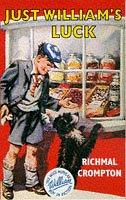the articulation of silence
 Jimmy Corrigan: The Smartest Kid On Earth
Jimmy Corrigan: The Smartest Kid On Earth
by Chris Ware
I am always going on about this book, recommending it to all sorts of people for all sorts of reasons and with my recent forays into graphic fiction I thought it was time to revisit the one I hold in such high esteem. I'm glad to say that it is still as beautiful, enchanting, moving and exciting today as it ever was, a benchmark I think for what graphic fiction can achieve and a weapon to unleash on anyone who questions its standing alongside the classic novels of old. If after reading this you are at all tempted let me say first that you must spend the few extra pounds that will get you the hardback edition (only £11.99 on Amazon or The Book Depository). The dust jacket of this book is a work of art in itself, folding out into a large poster with intricate design and text, enough to keep you busy for a while before getting into the book proper. If you have come across Ware before it may be through his series the Acme Novelty Library which are similarly bursting with invention, containing cartoons, adverts, cut-outs etc. The spine and boards are beautiful too, every part of the book exuding quality, craft and attention to detail. What is it that lies inside though?
Chris Ware was brought up by his mother and grandfather, his father having left when he was a baby. It was in a Chicago newspaper that these strips first began to appear, Ware using Corrigan as a kind of alter-ego to work through the embarrassment and discomfort of meeting an estranged parent before attempting to do the real thing himself, perhaps. Whilst working on turning it into a book, which details the faltering relationships between fathers and sons, he received a call from a man claiming to be his own. In a section on the final page and boards of this novel Ware gives a vague summary of what happened next in order 'to admit the artless, dumbfoundedly meaningless coincidence of "real" life and my weak fiction - not to mention my inability at knitting them together.' Ware is heavy on the self-deprecation and his lack of confidence continued into bafflement when the accolades started pouring in after this book was published.

The meeting of Corrigan and his father after all those years apart is just one strand of the story. Ware also casts back further into the Corrigan line and explores the life of his grandfather and great-grandfather. The latter is working on the construction of 'The White City' for Chicago's World Fair in 1893. Though separated by generations there is still a lack of connection and familial care between all of the Corrigans, the mothers in each case having a large impact but in very different ways. The men are left to struggle to communicate well and to struggle also to relate to women. This may make it all sound a bit dour and self-pitying (Ware would be the first to accuse himself of that) and whilst its true that the book has attitude of someone with their head permanently tilted down to the floor it manages to lift itself above navel-gazing through some truly beautiful artwork and structure. He also manages to rouse your sympathy too, not by making any of his characters particularly sympathetic or even showing them coping well in the face of adversity. Somehow by doing almost the opposite he shows how difficult it can be to make the simplest gesture without being clumsy about it, how difficult it can be to say the simplest thing. One of the great achivements of the book is to articulate the silence between the characters, the uncomfortable moments between conversation, the 'ahems', the coughs, the awkward physical gestures. Perhaps only in this graphic form could you render those moments so perfectly.

Ware also plays around with the panels; not only with their size but also their orientation and direction. Some pages include arrows to help you along, some panels seem to merge pictures together, some are busy, others sparse and every now and then you come across a page that takes you completely by surprise (not many books like this contain a cut-out zoetrope). There differing styles of illustration and text as well to compliment the different time periods but the seamless transition from one to the other is one of the joys of following the flow of the book. The colouring has such a satisfying solidity to it too, and that combined with the first-rate prodction values make the book a joy to hold, read, leaf-through and show-off. Ware reckons it should take about 4 or 5 hours to read in total, which happens to be about the same amount of time that he ever spent with his father.






0 comments:
Post a Comment